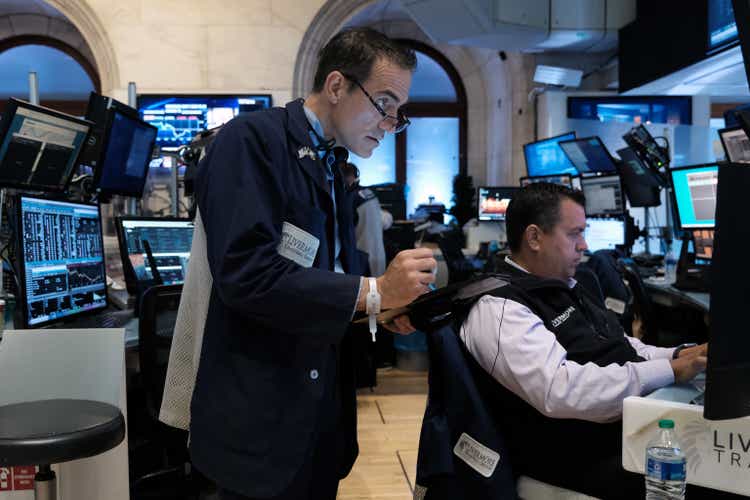Spencer Platt/Getty Images News
Wall Street’s major indices on Monday fell to fresh session lows as stocks remained under pressure on stronger than expected economic data which pointed to resilience in the economy despite the Federal Reserve’s aggressive tightening, while Treasury yields advanced.
The central bank will be in its quiet period this week ahead of its policy meeting next week.
The tech-heavy Nasdaq Composite (COMP.IND) had slipped 1.33% to 11,309.19 points in morning trade. The benchmark S&P 500 (SP500) was lower by 1.21% at 4,022.25 points, while the blue-chip Dow (DJI) declined 0.84% to 34,141.34 points.
The November ISM Services PMI Index, a key gauge of strength in the services sector, ticked unexpectedly higher. Additionally, October Factory Orders climbed past estimates.
“Make no mistake about it, markets have been hard to read lately. On one hand, this is natural when markets are in consolidation, but things are a bit worse due to the focus on the Fed’s action. We have reached an asinine point where ‘good news is bad news’ – positive economic data is seen to potentially encourage the Fed to raise rates, so the market has tended to rally on negative news,” Seeking Alpha contributor Adam Grimes said.
All 11 S&P sectors were trading in the red, with Consumer Discretionary and Financials retreating the most. Defensive sectors Utilities and Health Care fell the least.
Oil (CL1:COM) rose. OPEC+ over the weekend kept its output unchanged at the latest meeting, but Russia said it won’t accept a G7 oil price cap.
Turning to the bond markets, the 10-year Treasury yield (US10Y) was up 8 basis point to 3.57%. The 2-year yield (US2Y) rose 8 basis points to 4.36%.
It’s “fascinating that at the moment the market is focusing squarely on the very strong likelihood that we’ll ratchet down to ‘only’ a 50bps hike next week and extrapolating that level of dovishness rather than focus on any risks that the terminal rate could end up being nearer say 6% than 5%,” Deutsche Bank’s Jim Reid said. “Indeed Larry Summers was doing the rounds over the weekend suggesting that markets were likely under-pricing terminal and seemingly being more comfortable suggesting a peak nearer 6 than 5%, even if he wasn’t specific over a particular number.”
Among active stocks, Vans shoes maker VF Corp. (VFC) was the top loser on the S&P 500 after a disappointing outlook and the exit of its CEO.
Image and article originally from seekingalpha.com. Read the original article here.

